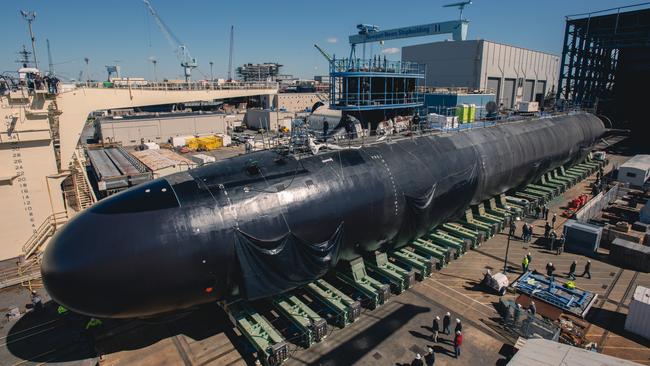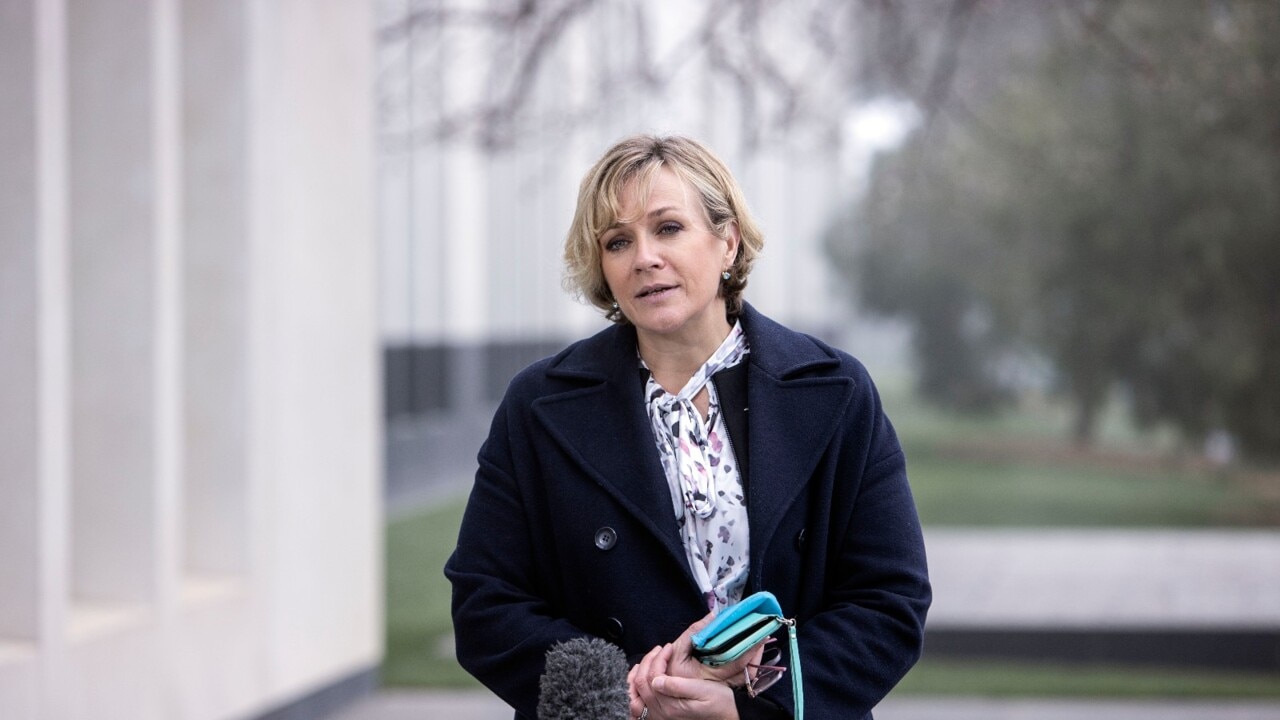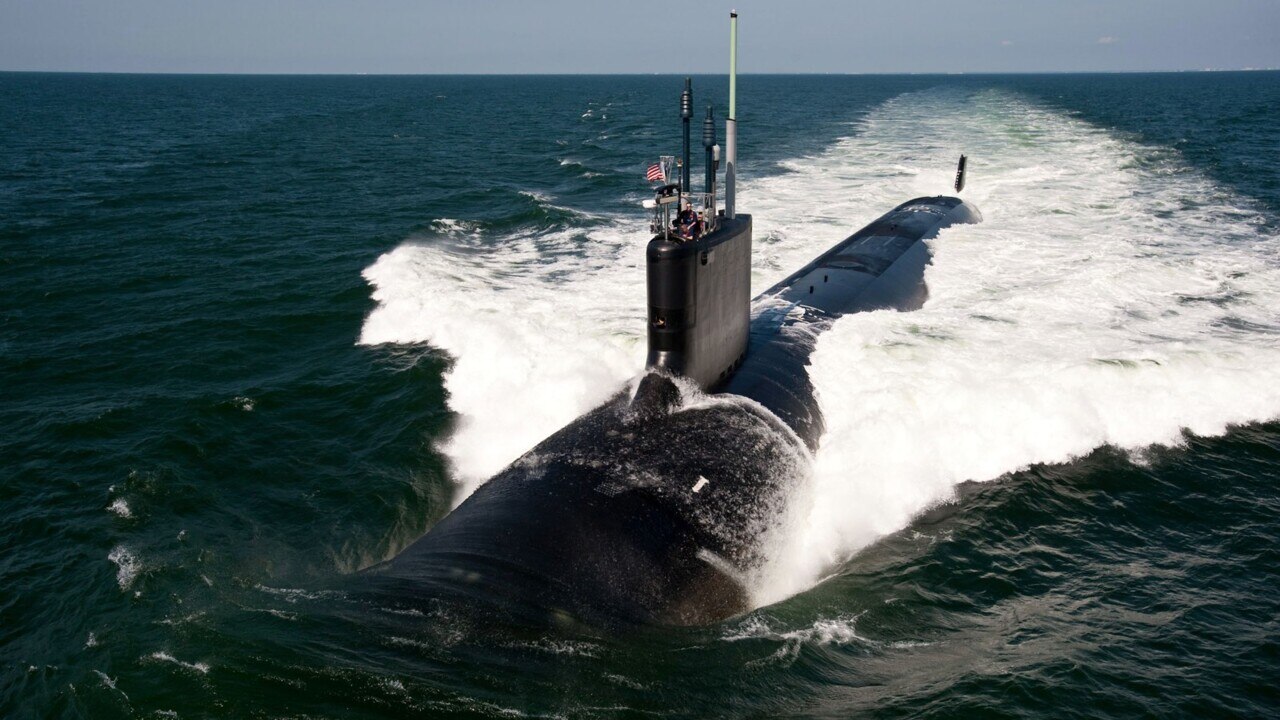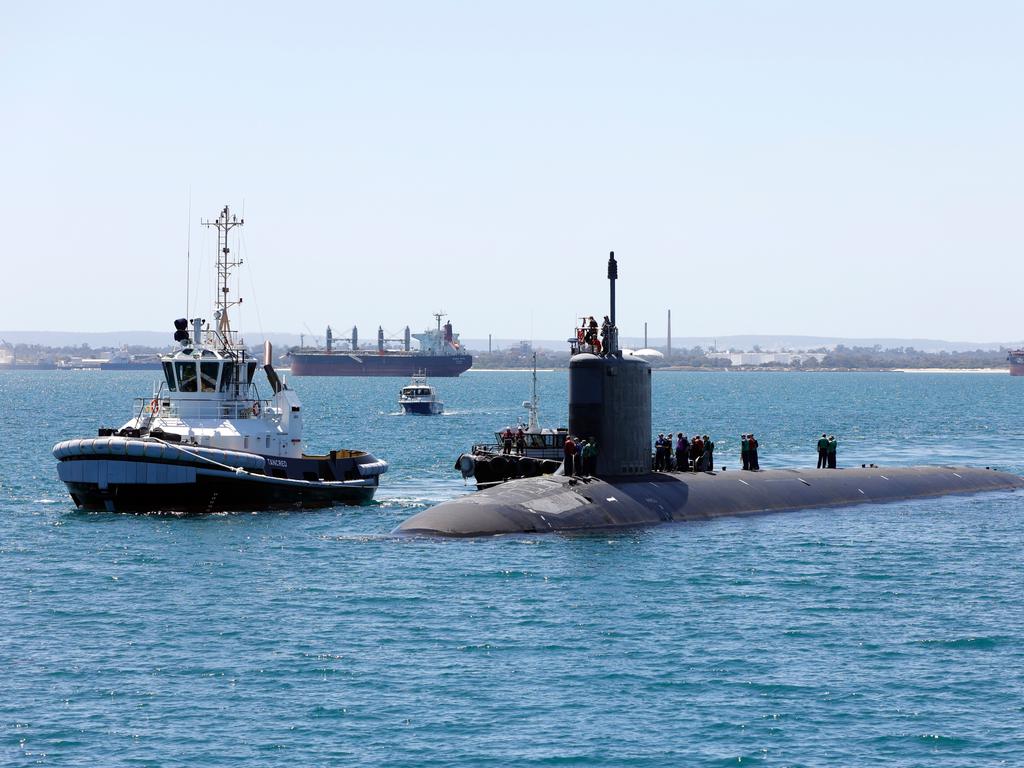
As the drip-feed of leaks on the AUKUS plan continues before the leaders’ announcement in San Diego, the decades-long, $200bn-plus plan shapes up as a quixotic mix of brilliance, risk and madness.
First the brilliance. In the short term it is hard to imagine a more effective statement to China of Australia’s defence intentions than acquiring nuclear-powered Virginia-class submarines from the US.
This agreement to buy three to five of the powerful Virginia-class boats in the 2030s is a critical diplomatic triumph for the Albanese government, given that the Americans have refused previously point-blank to consider such a concept.
It now appears that these submarines will be existing midlife second-hand boats, meaning that they can be delivered relatively cheaply and on time. Given the shadow that China’s military build-up is casting over our region, and the ever-shrinking warning time for any possible conflict, the strategic value of such timely delivery is enormous. The early acquisition of the Virginias will also remove the need to build an interim conventional submarine. This is no small thing. From the moment the US boats arrive in Australia, they will also allow for invaluable training as Australia seeks to increase the crews it needs to eventually drive its own fleet.

The other excellent early decision under the plan is the creation of a defence-led multi-agency body to oversee all aspects of the nuclear submarine program under the one roof. The body, which is likely to be led by the capable head of the Nuclear Powered Submarine Taskforce, Vice-Admiral Jonathan Mead, will bypass many of the moribund defence acquisitions processes and groups that have proven so incompetent in the past in delivering defence projects on time and on budget.
This at least gives some hope that when problems arise, which they absolutely will, that they have a better chance of being rectified than they have previously.
Also commendable, but still a high-risk issue, is the attention and money that the government plans to commit to find and increase the thousands of nuclear-aware personnel that will be needed to sustain and maintain and crew the Virginia-class boats.
The challenge of such an enterprise for a medium-sized country which is, in effect, starting from scratch in nuclear know-how, is almost impossible to overstate. Australia cannot afford to fail in this historic workforce gamble and the government will have to throw pots of money to entice a generation of young Australians to join this nuclear enterprise.
So it is a shame that this sensible first part of this AUKUS plan – with the purchase of Virginia-class submarines in the 2030s, the rotation of US submarines through Perth from later this decade and the ambitious training plans to create a nuclear-savvy workforce – are let down by the madness of what is supposed to come next.

After Australia has done all of the very hard work – overcoming the regulations, the red tape, the export control and the politics – in securing a system whereby we can acquire three to five Virginia-class submarines from Washington, it gives it all up. For what? To help build from scratch in Adelaide a completely separate next generation British-designed nuclear-powered submarine.
This all but guarantees a future nightmare of massive delays, development risk, price blowouts and schedule nightmares – everything that we see on every first-of-type submarine project around the world.
Yet it is all totally unnecessary because, having done the initial hard work in obtaining up to five Virginia-class boats, it would be relatively simple and cheap to simply keep acquiring Virginia-class boats until we have eight or even more of them, a powerful deterrent for any adversary.
Instead, for reasons which the government needs to explain, we plan to take a needless U-turn in the AUKUS plan so that we actually run two different types of nuclear submarines at once. Different boats, different systems, different training, different everything. The cost to taxpayers will be money, money and more money. It is akin to giving a first-time juggler six balls to throw in the air rather than three. This is a heavy price for Australia to pay to keep the Brits and Adelaide happy.
Luckily, this crazy decision is still more than a decade away and I suspect that it will eventually be abandoned as the cost and force structure benefits of sticking with the Virginia-class boats becomes obvious to future governments.
So, perhaps it is best to just focus on the early part of the AUKUS plan rather than the later Don Quixote elements, because it starts off very well. That, at least, is a relief.
More Coverage








Australia is fortunate that the best and most important part of the AUKUS nuclear submarine plan happens first, while the worst parts are thankfully decades away and will probably never be realised.